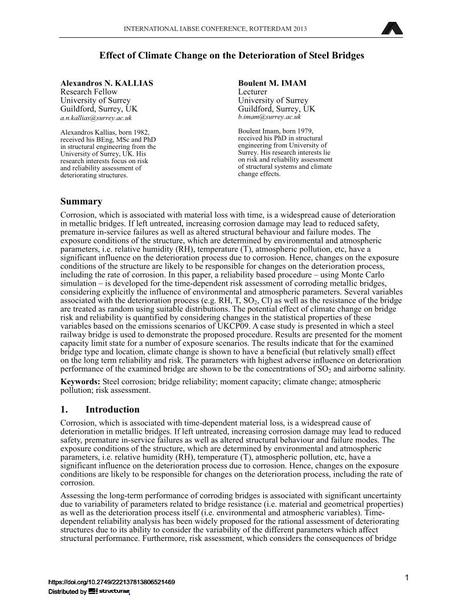|
Abstrait:
|
Corrosion, which is associated with material loss with time, is a widespread cause of deterioration in metallic bridges. If left untreated, increasing corrosion damage may lead to reduced safety, premature in-service failures as well as altered structural behaviour and failure modes. The exposure conditions of the structure, which are determined by environmental and atmospheric parameters, i.e. relative humidity (RH), temperature (T), atmospheric pollution, etc, have a significant influence on the deterioration process due to corrosion. Hence, changes on the exposure conditions of the structure are likely to be responsible for changes on the deterioration process, including the rate of corrosion. In this paper, a reliability based procedure – using Monte Carlo simulation – is developed for the time-dependent risk assessment of corroding metallic bridges, considering explicitly the influence of environmental and atmospheric parameters. Several variables associated with the deterioration process (e.g. RH, T, SO2, Cl) as well as the resistance of the bridge are treated as random using suitable distributions. The potential effect of climate change on bridge risk and reliability is quantified by considering changes in the statistical properties of these variables based on the emissions scenarios of UKCP09. A case study is presented in which a steel railway bridge is used to demonstrate the proposed procedure. Results are presented for the moment capacity limit state for a number of exposure scenarios. The results indicate that for the examined bridge type and location, climate change is shown to have a beneficial (but relatively small) effect on the long term reliability and risk. The parameters with highest adverse influence on deterioration performance of the examined bridge are shown to be the concentrations of SO2 and airborne salinity.
|

